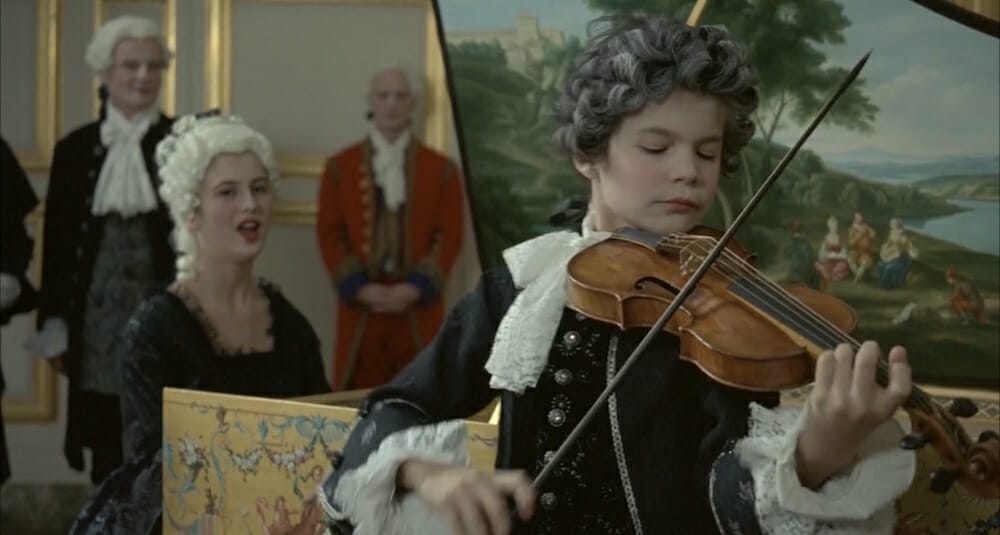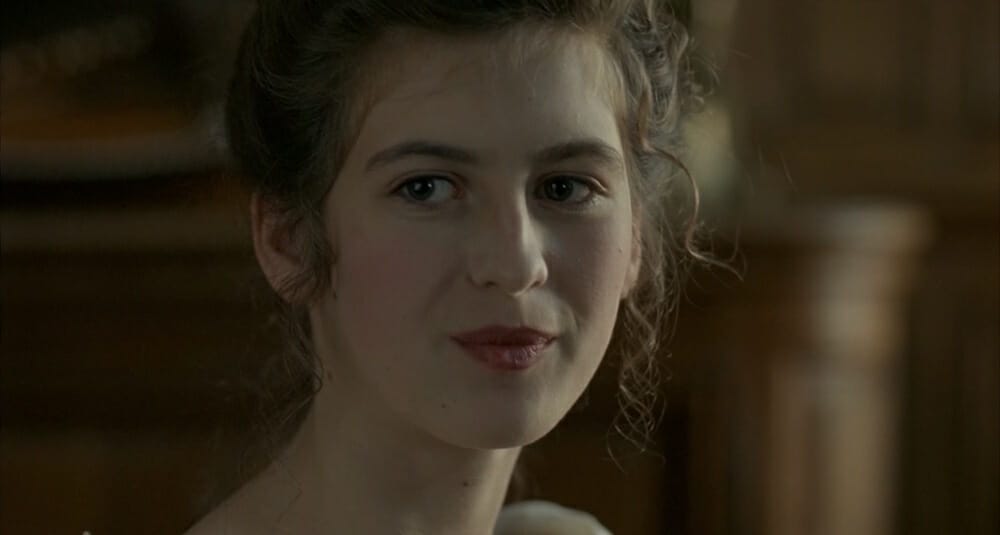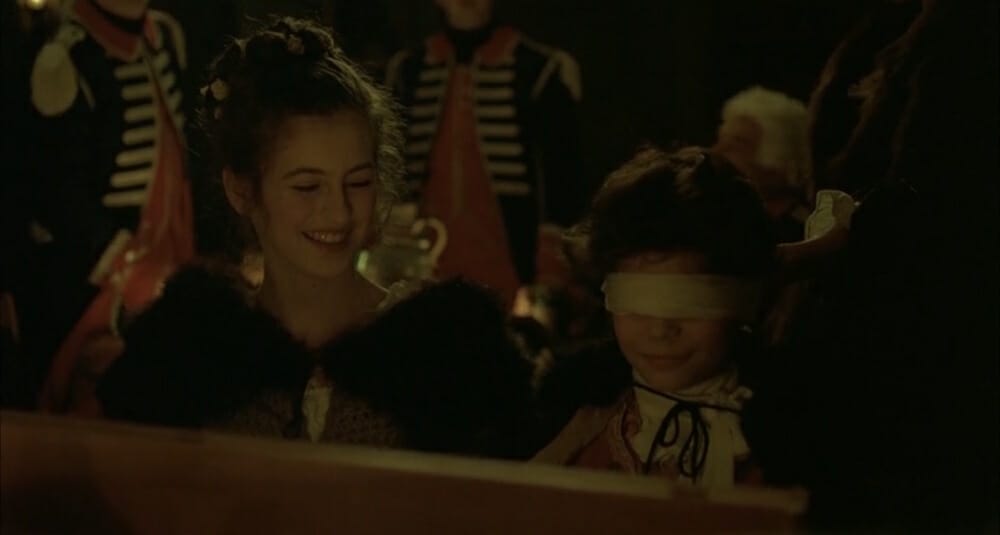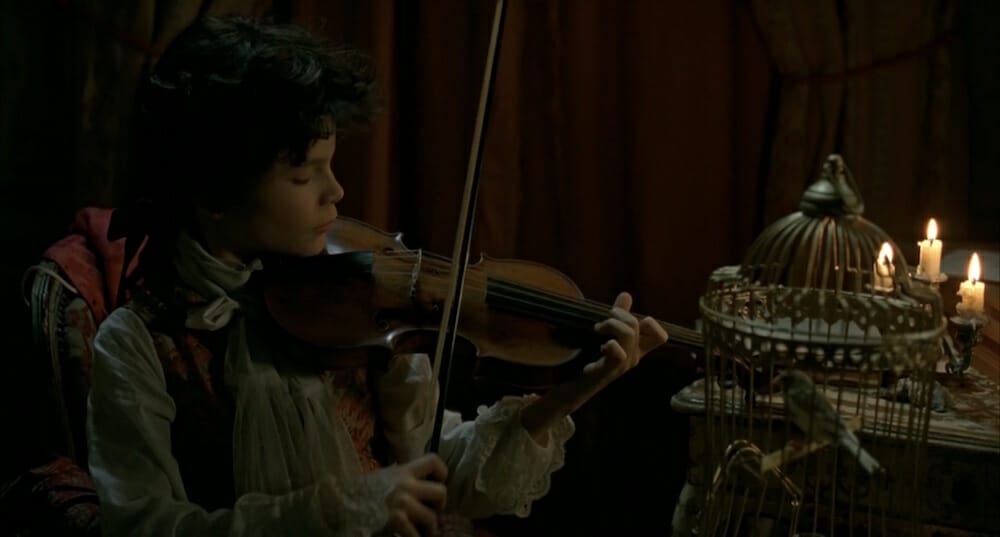Our story starts by following a family of four traveling by coach through the snowy forests of Europe to perform classical music for kings and queens across the continent. With the soft sounds of an orchestra playing in the background, the father, Leopold, tells us about the family's three-year-long journey as the camera introduces us to the faces of his children. The young, teenage girl, Nannerl, loves to play the violin, but her father no longer lets her play because he claims it is no instrument for a girl. Instead, she plays the harpsichord and sings while her eleven-year-old, younger brother, Wolfgang, plays the violin and steals away the spotlight. Both children are regarded as child prodigies, but when performing, their father lies about Wolfgang’s age in order to make the boy’s accomplishments as both a composer and violinist more impressive. Mozart’s Sister is a story based on the early life of Maria Anna Nannerl Mozart, the older sister of the world-renowned classical music composer Wolfgang Amadeus Mozart.
Upon arriving in Versailles, we follow the family, who has come to present their two children to the French Court, up the stone steps of the Palace of Versailles. They are dressed in black, for it is a time of mourning for the royal family who had just lost a family member to childbirth. We are then immediately thrown into a scene of the two children playing together in front of a small audience. Wolfgang is standing front and center as they play, his sister playing a harpsichord behind him. The rich, complex sounds of his violin stand out against the dainty sounds of the harpsichord. As she plays, her eyes wander around the room with no expression on her face as if she is bored. Throughout the film, we see similar occurrences as the two perform together, showing us how she is hidden behind her brother’s shadow.
During their visit, a woman pulls Nannerl aside so she can deliver a love letter to a man named Hughes. However, Hughes is with the Dauphin who is not allowed to be around females, so she is forced to change into men’s clothes. Dressed in a white wig and disguised as a young man, Nannerl walks into the room where the Dauphin and Hughes are practicing the violin and harpsichord together, letter in hand. As soon as the Dauphin’s eyes look up from the strings of his violin, he lifts his bow, and the music stops in dead silence. With all eyes now on her, she nervously makes her way across the room towards the pair and delivers the letter. It isn’t long before everyone leaves the room, leaving her alone with the Dauphin. After discovering their shared interest in music and her hidden musical talents by requesting she play the violin and sing, he asks her to compose pieces for him, sparking her rebellion to compose music against her father’s will.
Ovid.tv’s Mozart’s Sister Reveals the Struggle of Gender Equality in the Mid-1700s
Throughout the film, Mozart’s Sister shows us Nannerl’s struggle against both her father’s favoritism for Wolfgang and her acceptance as a female musician and composer. Their father, a composer himself, constantly brags to people about the numerous pieces that Wolfgang has written at such a young age, including his son composing his first piece at only five years old and having four sonatas at the printers at ten years old. He even encourages his son to learn composition alongside him. When it comes to his daughter, Leopold immediately shuts down any attempts for her to do the same due to society’s expectation of her as a young woman, telling her things such as: “One must know the secrets of harmony and counterpoint. These are beyond people, especially women,” or “What you call sonatas were nothing but absurd notes lumped together.” Each time she is put down by her father, the camera switches over to Nannerl, her gaze dropping to the ground.
Going against her father’s wishes, we watch Nannerl, driven by her love of music, go up against the obstacles set against her by society’s standards for young, female musicians in the mid-1700s, making this a good film for both classical music lovers and feminists alike. Although the film is not completely historically accurate, it is also recommended for those who enjoy learning about musical history. However, this film is in French, so anyone who does not enjoy watching films with subtitles should steer clear.
HIGHLY RECOMMENDED
Nominate this for The Picture This Post BEST OF 2021???
Click Readers' Choice
Want to see who won the Picture This Post READERS’ CHOICE competition last year?
WATCH THIS SHORT VIDEO—
CAST:
Marie Féret as Nannerl Mozart
Marc Barbé as Léopold Mozart
Delphine Chuillot as Anna-Maria Mozart
David Moreau as Wolfgang Mozart
Clovis Fouin as The Dauphin
Lisa Féret as Louise of France
CREATIVE TEAM:
Director: René Féret
For more information or to watch this film visit the OVID.tv webpage for MOZART’S SISTER.
Images courtesy of OVID.tv

About the Author: Peyton Warren
It was years before the pandemic when Peyton looked around and realized she was the only one who raised her hand. The teacher had asked who would risk their lives to end a virus outbreak. At the time, Peyton had been reading The Hot Zone, a book that tells the origin stories of Ebola outbreaks around the world. Even now, it remains one of Peyton’s favorite books, and it has sparked her interest in biology. When she’s not focusing on science or looking up odd facts to feed her vivid imagination, she enjoys watching movies, drawing cartoons, writing her own stories, or taking pictures of wildlife.









